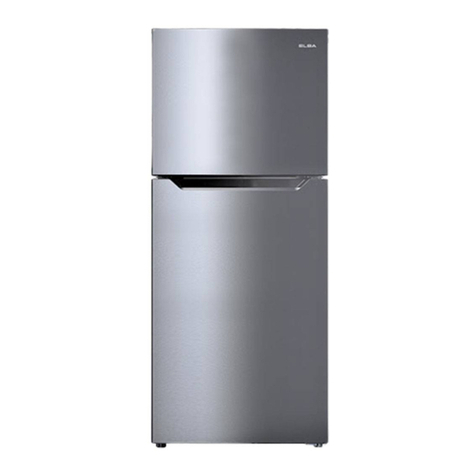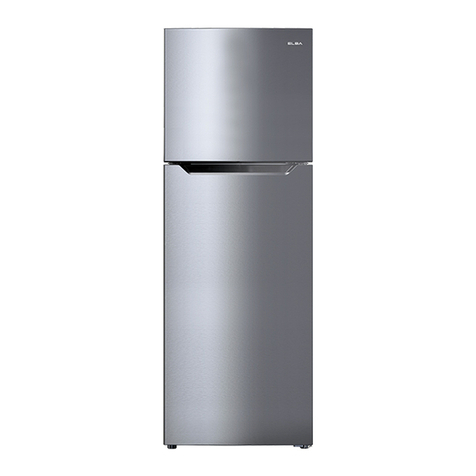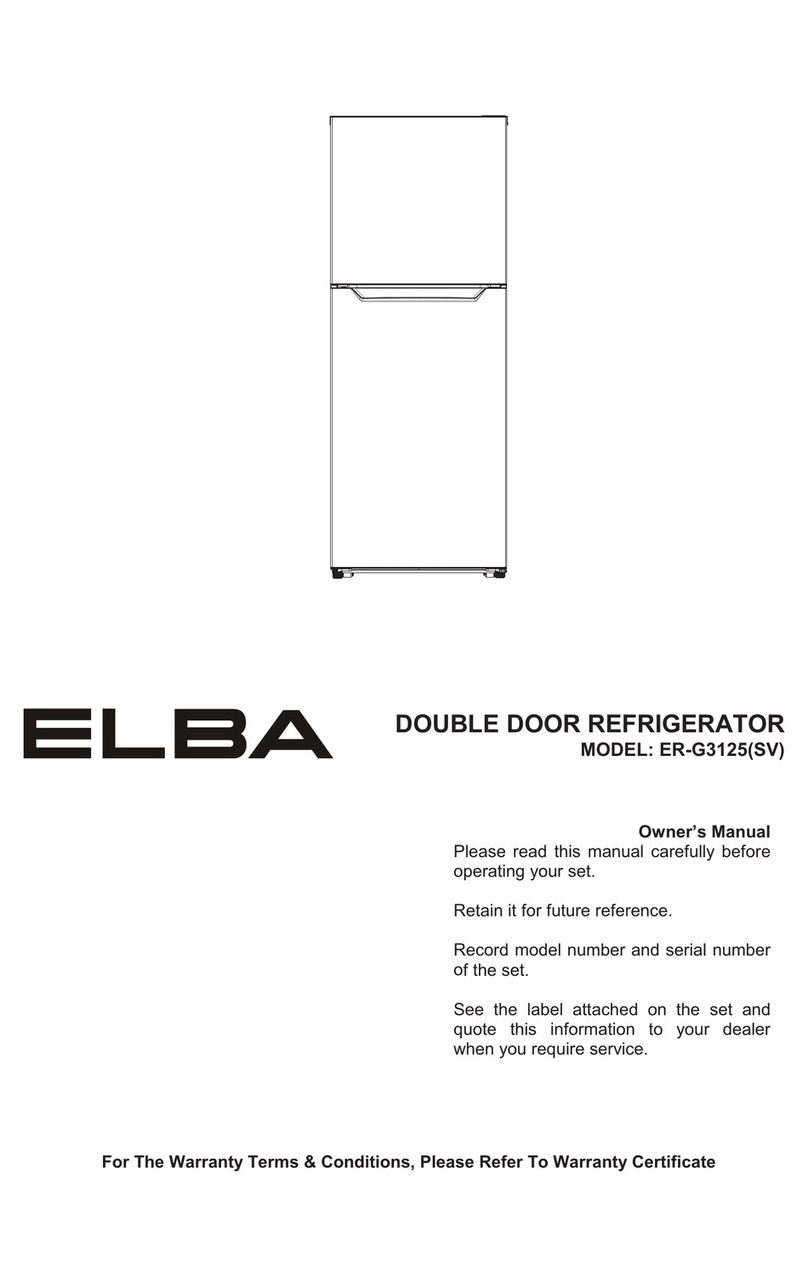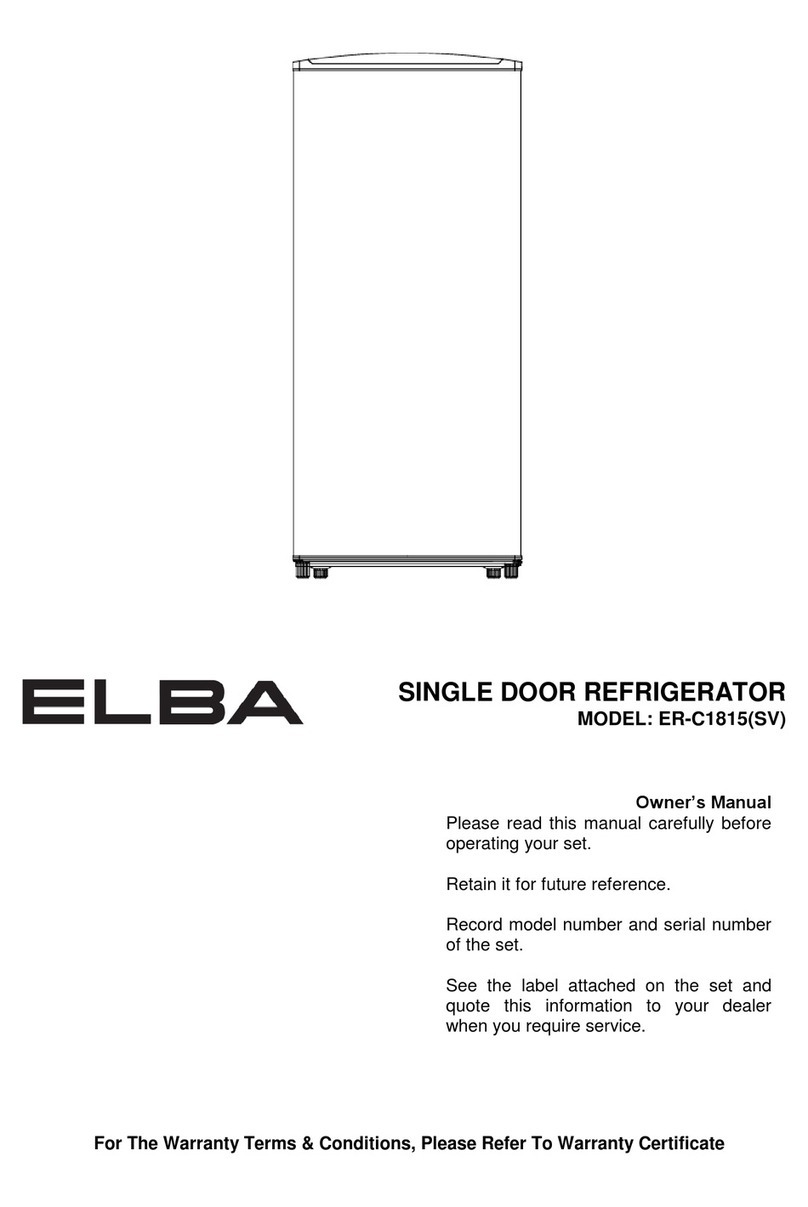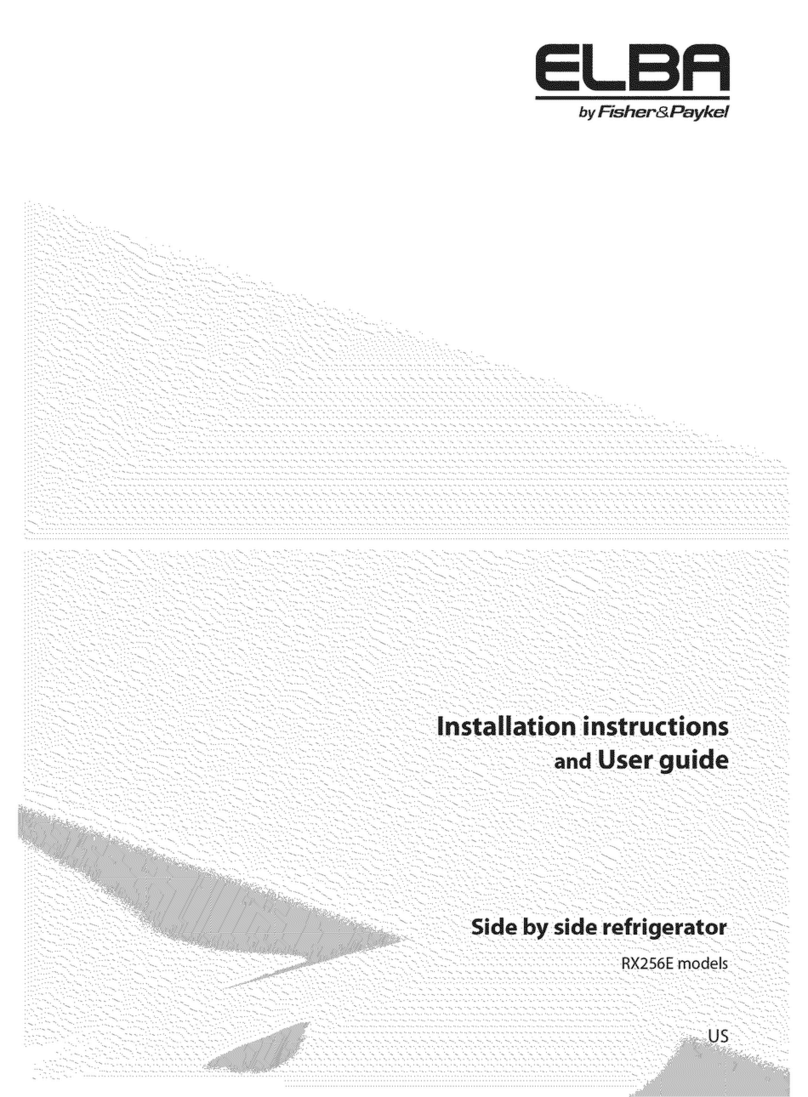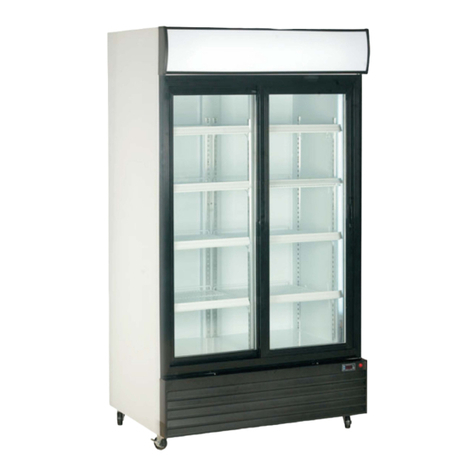7
Storing food in your refrigerator
Storing fresh, perishable foods in your refrigerator helps to extend storage times. The cold
temperatures slow down the major causes of food spoilage – namely, the growth of bacteria,
moulds and yeasts, and chemical and physical reactions.
Fresh food care
The quality of food before it is placed in the refrigerator is critical to successful storage. For
best results:
Select foods that are very fresh and of good quality.
Buy only the amount that you will use within the recommended storage time.
Ensure that food is well wrapped or covered before it is stored. This will prevent food from
dehydrating, deteriorating in colour or losing taste and will help maintain freshness. It will also
prevent odour transfer.
Make sure that strong smelling foods are wrapped or covered and stored away from foods such
as butter, milk and cream which can be tainted by strong odours.
Refrigerate fresh, perishable foods as soon as possible after purchase. If left at room temperature
for any length of time the rate of deterioration will be accelerated.
Avoid overloading the refrigerator. Cold air needs to circulate to maintain safe food storage. Do
not open the refrigerator door unnecessarily.
Cool hot foods down before placing them in the refrigerator. This should be done quickly. It can
be aided by placing the container of food in a bowl of ice and water; renew the ice as necessary.
(Note also that hot containers may damage shelves and wall of the refrigerator).
Store raw and cooked food in separate containers or packaging to prevent cross contamination.
In addition:
Keep the refrigerator clean. Wipe the inside walls and shelves frequently (refer to Cleaning Care)
and place only clean containers in the refrigerator.
Keep a close check on the quality of food in your refrigerator. Discard any food that shows
signs of spoilage. Pay particular attention to meat, fish and poultry, as these foods are highly
perishable. Use food within the recommended storage times.
Dairy foods and eggs
Most pre-packed dairy foods have a recommended use by/best
before/best by’ date stamped on them. Store them in the refrigerator
and use within the recommended time.
Butter can become tainted by strong smelling foods so it is best
stored in a sealed container.
Eggs should be stored in the refrigerator. For best results, especially
when baking, remove the eggs from the refrigerator two hours before
they are to be used.


